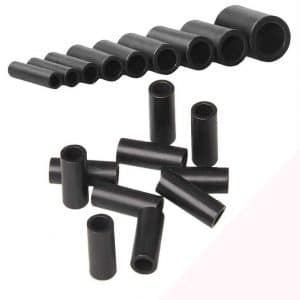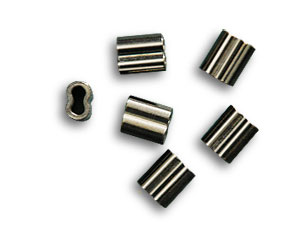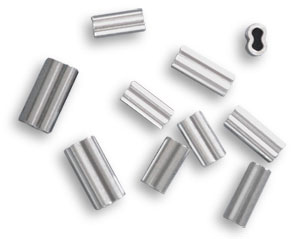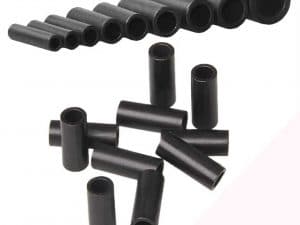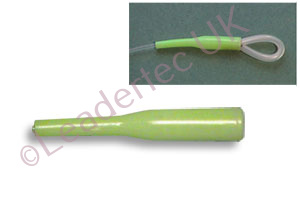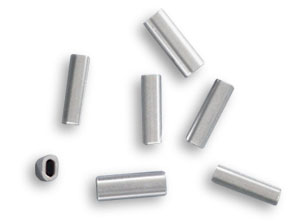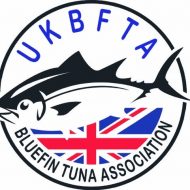FISHING LEADER CRIMPING TECHNIQUES
WHAT IS CRIMPING?
Crimping or swaging as it sometimes called is a strong and fast method for making joins in fluorocarbon, nylon monofilament and stranded wire cable (we’ll just refer to it as wire from now on). However some of the techniques are misunderstood and fish are often lost due to poorly made crimped connections. By using different leader materials you can use these techniques to build leaders for any species or any fishing technique. There’s no difference in technique when crimping shark leaders or crimping marlin leaders. Learn these basics and you’ll soon be building leaders that are the envy of your fishing buddies.
All of the techniques recommended for crimping nylon monofilament leaders apply equally to crimping fluorocarbon leaders, there’s no difference in the techniques used.
Remember, practice makes perfect. Learn these methods at home when the weather’s too bad for fishing and never lose another fish to a bad connection.
CRIMP SLEEVES
Crimp sleeves are commonly referred to as Crimps, Sleeves, Fishing crimps or sometimes Ferrules. These various names all refer to the tubular metal joining pieces which are compressed around the leader strands to form a joint. For fishing purposes they are usually made of brass, copper or aluminium as these materials are soft enough to deform when compressed by a correct crimping tool without damaging the leader material. Stainless steel sleeves are sometimes used in heavy duty engineering applications or for constructing wire fencing but we don’t recommend these for fishing leaders as the higher force required to compress these sleeves can easily damage nylon or fluorocarbon.
There are three main types of crimp sleeve in common use.
1. Round section
2. Oval section
3. Double barrel
Round section
The less said about these the better. They are usually made from brass and are compressed with a point to cup type crimp tool. They don’t make a strong join but are just about adequate for some light tackle applications. If you’re desperate and can’t tie a knot use these.
Oval section
This style is in almost universal use on commercial longline vessels, and they catch some pretty big fish using them. They are available in various brass and copper alloys and in aluminium and you will need a cup to cup type crimp tool to compress them. These are an excellent choice for serious anglers. When appropriately sized for the leader in use and compressed with the correct tool they create a very strong and reliable connection.
Some anglers worry that the two strands of the leader may cross inside the sleeve but if the correct size sleeve is used this will not be possible.
Bear in mind though that in saltwater two dissimilar metals can set up a corrosive reaction and if aluminium sleeves are used to join steel cable they will corrode away in a remarkably short period of time, just like the sacrificial anodes used on sea going boats. For this reason aluminium sleeves should only be used for joining monofilament (nylon or fluorocarbon), whilst brass or copper sleeves can be used for joining either monofilament or wire.
Double barrel
Double barrel sleeves are my favourite. They make a strong neat join and there is no danger of the wire or monofilament crossing over itself inside the sleeve.
They are also in common use on longline boats, but due to being very slightly more costly than oval sleeves they are less popular. Longliners use an awful lot of sleeves so every cent saved is important, but that’s not really such an issue for charter captains or private anglers who use far fewer.
Like oval sleeves, double barrel sleeves are available in both brass or copper and in aluminium. They should also only be compressed with a cup to cup style crimping tool.
The same comments regarding corrosion apply as for oval sleeves. It’s important so I’ll say it again. Use aluminium sleeves for monofilament only, use brass or copper sleeves for either monofilament or steel wire.
Double barrel sleeves are available in both standard and heavy-duty models. The standard sleeves are only available in brass or copper, whilst the heavy-duty sleeves are available in brass, copper and aluminium. These heavy-duty sleeves are for use with heavier leaders and larger crimping tools and are often generically referred to as ‘Nicopress’ sleeves.
fishing Crimping tool styles
There are four major types of crimping tool that you are likely to see.
1. Point to cup
2. Cup to cup standard duty
3. Cup to cup heavy duty
4. Cup to cup bench press
Point to cup
These tools can be purchased relatively cheaply from tackle shops around the world. They resemble a large pair of pliers with semi circular cut outs on one jaw and a series of pointed teeth on the opposite jaw which match up with the opposing cups. They are used with round section crimp sleeves and they roughly flatten the sleeve around the leader without forming fully around the leader. They make a very inadequate connection and are not suited to rigging for big fish. I guess you can tell that I don’t much like these.
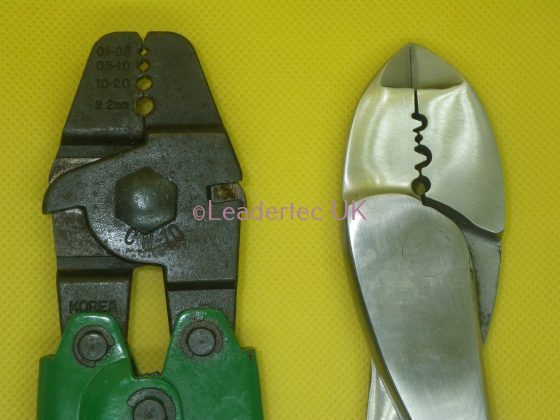
Cup to cup
I’ll discuss these together because the principle is the same for all of them.
Again they resemble a large pair of pliers, but the opposing jaws have matching pairs of semi circular cut outs (the cups). There are usually three or four different sized cut outs depending on the brand of tool.The jaws usually have markings to indicate the appropriate sized sleeves to use with each cut out. Each cut out will usually accommodate several different sized sleeves either oval section or double barrel.
These usually accommodate standard sleeves up to around 2.0 mm — 2.2 mm diameter, good enough for 300 — 400 lb monofilament or 600 lb cable. For most anglers this should be all you’ll ever need.
These are a more costly version of the standard tool, built to much heavier standards and capable of handling standard and heavy duty sleeves as large as any angler is ever likely to need. These are usually found on charter boats, in tackle shops and in the workshops of serious heavy tackle anglers.
These use pretty much the same jaws as the heavy duty tools but have an extended handle and are bench mounted to facilitate crimping large quantities of heavy sleeves. They are not portable and are reasonably expensive so are usually only used by tackle companies, some larger tackle shops and commercial longline vessels.
How to Use a Crimping Tool
Making a basic crimped connection in monofilament
Take your monofilament leader and select a suitable sleeve. This can be alloy or copper, oval or double barrel, whatever you like, but it should fit snugly over the mono whilst still sliding easily.
Pass the mono through the sleeve, make a loop and pass it back through the sleeve in the opposite direction. Pull an extra 2 or 3 inches through the sleeve.
Take a cigarette lighter and melt the tag end of the mono. When it softens and starts to turn into a ball press the melted end against the lighter or other hard surface to spread and flatten it.
Pull the leader back through the sleeve and the flattened mono end will sit snugly against the end of the sleeve without pulling back through. Now you can adjust the size of the loop.
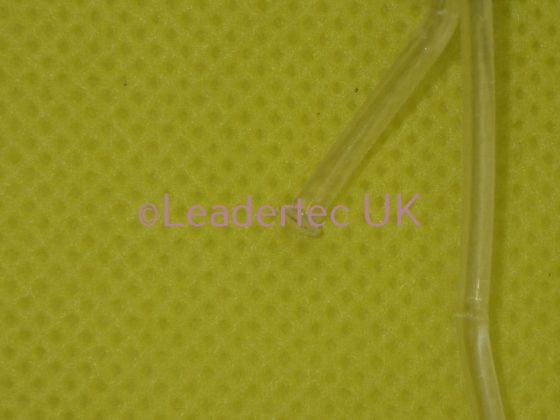

Right correct - note the uncompressed centre sections and the flared ends of the sleeve.
Take your crimp tool and select the appropriate cut out to suit your sleeve. Position the sleeve between the jaws of the tool so that the concave faces of the cups bear against the curved edges of the sleeve. Do not crimp all the way to the ends of the sleeve as this will cause the edge of the sleeve to cut into the monofilament. Make sure that you have left about 1/32 inch (1.0 mm) between the end of the sleeve and the tool.
Squeeze the tool tightly closed and the sleeve should compress around the monofilament. If using a small sleeve you will only need to crimp it once, but larger sleeves may require that you move the tool along and crimp it once or twice more along its length. If possible leave a 1/32 inch (1.0 mm) space between each compressed portion of the sleeve, and the same at each end. The sleeve should have a flared appearance at each end, this will prevent the edge of the sleeve damaging the monofilament.
If using this technique to attach hooks, swivels or any kind of anti chafe tube or loop protector you’ll need to remember to thread the leader through them before passing it back through the sleeve and crimping it closed.
Spike’s tip – When making fluorocarbon leaders for sharp eyed fish such as tuna it pays to darken light coloured aluminium crimps with a black colour Sharpie or similar fibre tip pen to prevent the crimp being seen by the fish. Leadertec copper sleeves are coloured black at the factory so no extra treatment is necessary if you’re using them.
Making a basic crimped connection in wire
Making a crimped connection in wire is pretty much the same as with monofilament, but there are a couple of important differences.
- Use brass or copper sleeves only. It doesn’t matter whether they’re oval or double barrel.
- Crimp the full length of the sleeve all the way to the end. There’s no need to leave a flared end to the sleeve as when crimping monofilament, the sleeve won’t damage the wire as it would damage mono.
- Ensure that you don’t leave an exposed tag end of wire, this can cut you badly when you are leadering a fish. You may need to use a second sleeve crimped over the tag end to achieve this, just pass a couple of extra inches of leader through the first sleeve before crimping it tight. Then either wrap the tag end around the main leader before crimping them with the second sleeve, or if you’re feeling clever you can haywire twist the two lengths of cable before crimping.
Common crimping mistakes
1. Crimping all the way to the end of the sleeve
This causes the edge of the sleeve to cut into the monofilament, always leave about 1/16 inch (1.6 mm ) uncrimped at each end of the sleeve.
2. Using alloy sleeves on stainless steel wire
As previously mentioned this causes rapid corrosion of the alloy sleeve quickly weakening the joint.
3. Using the wrong size sleeve
It’s pretty much impossible to use too small a sleeve, the leader just won’t fit inside it. However it is possible to use too large a sleeve.
The purpose of crimping is to deform the metal of the sleeve around the leader and not to simply crush the crimp until it touches the leader in as many places as possible. Choose a sleeve that is a comfortable snug fit on your chosen leader material.
4. Not using the correct crimping tool for the sleeves in use or not using a crimping tool at all
We’ve all met the guy who isn’t prepared to waste his hard earned Dollars on the right tool for the job. He says that he can do just as good a job with pliers, a bench vice, a hammer, his hands, his teeth or whatever.
Well they can’t, that’s the beginning and the end of it.
Monofilament will be damaged by all these methods and whilst wire is more forgiving the individual strands can also be damaged. These methods will produce a joint that sometimes holds up to average fish but will fail when pushed to the limit.

When you consider that a standard crimp tool costs less than 1/20 of the price of a standard trolling charter and should last at least 10 years it seems a false economy to use anything else.
I’ve never seen a correctly crimped connection fail. Fish can be lost for all sorts of reasons but this needn’t be one of them.
5. Using the correct tool incorrectly
Many people think that a cup to cup crimping tool should be used with the metal ridges between the semi circular cups pressing into the central groove between the two barrels of a double barrel sleeve or into the flat surfaces of oval sleeves. Oval or double barrel sleeves makes no difference, they should both be compressed as shown in the upper picture.

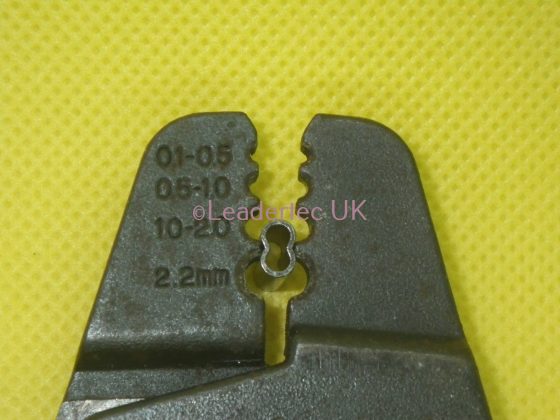
This is wrong, the pressure should be exerted by the curved surfaces of the cups against the curved sides of the sleeve.
6. Leaving a tag end protruding from the sleeve
This isn’t a big problem with monofilament although it does look untidy and catches on weed and debris in the water.
If you can’t avoid a tag end use a crimp protector to cover the join.
Wire is a different story though. A tag end of wire can cut you badly when you are leadering a fish. Always ensure that the tag ends are covered by a sleeve.
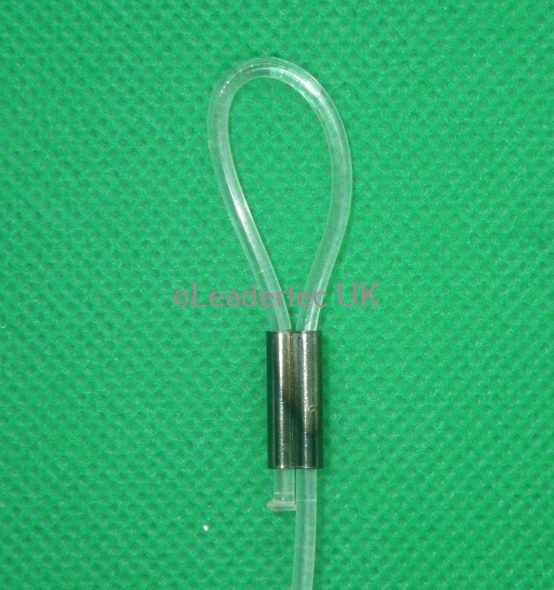
7. Not crimping the sleeve
Unbelievable but true, it’s very easy to be distracted and forget to actually crimp the sleeve! I’ve done it, but hopefully having read this you won’t!
Good Fishing!

-
FISHING CRIMPS & CRIMP SLEEVES
PRO RIGGER BRASS HEAVY DUTY ROUND CRIMPS
£2.95 – £9.50 Incl. UK VAT (VAT Free outside UK) Select options -
ATTRACTORS & RATTLES
PRO RIGGER CRIMP PROTECTOR
£2.40 – £2.95 Incl. UK VAT (VAT Free outside UK) Select options -
FISHING CRIMPS & CRIMP SLEEVES
PRO RIGGER ALUMINIUM OVAL CRIMP SLEEVES
£3.50 – £6.95 Incl. UK VAT (VAT Free outside UK) Select options

